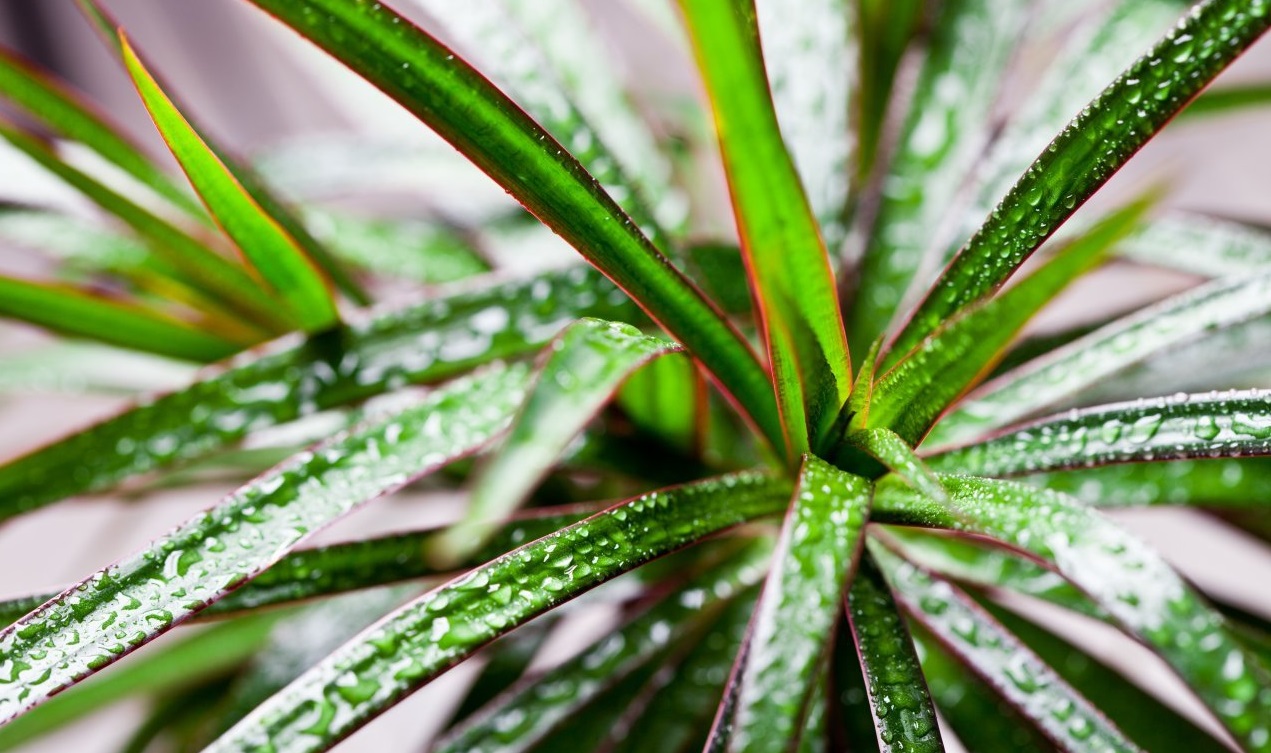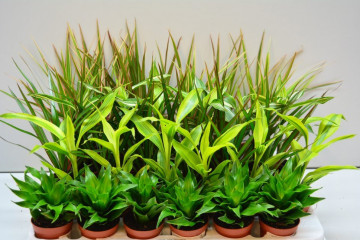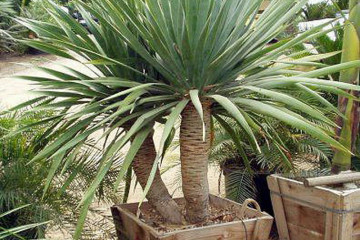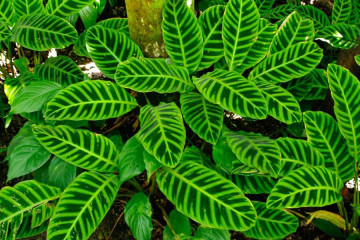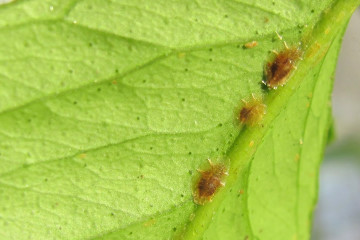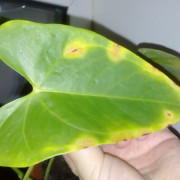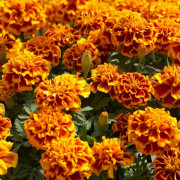Dracaena - flower diseases and how to deal with them
Content:
Among the huge variety of plants used for home, office, apartments, shopping malls and landscape decorations, the Dracaena family is common. The group includes 40 species, which vary in size and shape. This beautiful plant requires proper care and attention.
Why can a plant get sick?
Like any other flowers, dracaena are susceptible to disease. Typical Symptoms: A brown discoloration of the white areas of leaves (dead or yellow tips) may indicate fluoride toxicity or alkaline soil. Odorless brown spots on the roots indicate soft rot.
Reddish or light brown specks surrounded by a yellow halo may indicate that the dracaena has mottling. Yellow spots on dracaena leaves, yellow or dead streaks indicate that the plant has become too cold.
Diseases and treatment of dracaena
Having identified the disease, measures should be taken to treat it. Recovery of diseased flowers is not always possible, especially when the situation is severely neglected.
Fluoride toxicity
This is one of the most common problems faced by dracaena. Fluoride toxicity appears as yellow leaf tips, edges, and dead spots. The leaves have dark brown and dead areas with yellow edges.
Too many soluble salts or boron cause the same symptoms. To avoid this kind of problem, you should maintain the soil pH in the range of 6.0-6.5, avoid fertilizing dracaena with fluoride products and do not water the plant with water with a high fluoride content. Water and soil are tested to determine toxicity or alkalinity, and adjustments are made if necessary to help the plant grow back after damage. It is important to regularly leach accumulated salts and fluorides from the soil in potted plants, slowly passing through the soil an amount of distilled water equal to two volumes of the pot in which the dracaena is growing.
Fusarium leaf spot
Young leaves are covered with reddish or rusty spots. The plant can be preserved with iprodione, thiophanate methyl, mankozeb, and chlorothalonil. To combat fusarium spotting, a fungicide is used to treat it. If the new leaves stop turning red, then the treatment was successful. It will not be superfluous to adjust the irrigation technology. In order to limit the spread of infection, avoid watering from above and make sure that the plants are not flooded.
Dracaena pests
Mites
Observing a white bloom on dracaena, it can be assumed that the plant is sick with mold. Fuzzy white spots are not a strong signal.They are often caused by sucking pests that feed on liquid from plant tissue.
Spider mites (technically arachnids) look like tiny moving dots when viewed with the naked eye. The appearance of a spider mite first manifests itself in the form of a light scattering of dots on the leaves of plants, which begins to twist, followed by yellowing or bronzing of a larger area of the leaves. If the infection is severe, a thin web of ticks can be seen. They prefer hot, dry and dusty conditions, and drought-prone plants are especially vulnerable to them. Dracaena is not growing what to do? Water your plants regularly to reduce the chances of mite problems.
Sometimes spraying the foliage of plants with water reduces dust and knocks down spider mites. To get rid of them, spray the plant with insecticides for indoor plants. Insects are easily removed with pyrethrins.
Scaly insects
The mealybug on dracaena are grayish wingless insects that move slowly and are covered with a waxy coating. They have wax threads emanating from the bodies. They tend to clump together when feeding, looking like cotton masses, often concentrating in leaf axils and other sheltered areas. In adult females, cotton scales on pillows have brownish bodies with a characteristic white, corrugated egg sac.
These pests also produce droplets of a sticky, sweet substance known as honeydew, which causes soot to grow, can curl leaves due to its consistency, and attract ants. This is the answer to the question why dracaena leaves curl into a tube. On flowers grown outdoors, pests are usually controlled by natural predators, unless beneficial insects are destroyed by persistent broad-spectrum pesticides, dust, or ants.
It is recommended to regularly spray the plant with a strong jet of water to knock down powdery bugs or other pests, rinse out honeydew and reduce dust. You can also use a ready-made insecticidal soap or garden oil to fight bed bugs.
The closest relative of the mealybug is the scale insect that lives on dracaena. Outwardly, they look like dried brown spots on dracaena leaves or bubbles (the so-called "shields"). Such shields can cover a significant area of the flower. Hence the name of the parasite. Often they are located quite tightly, forming a kind of bark on the trunk and leaves. It is recommended to deal with them by mechanically removing the shields, for example, using a toothbrush.
Thrips and other pests
Several species of thrips feed on dracaena. These pests are tiny, delicate looking insects that invade plant tissue and feed on cellular contents. Their appearance leads to distortion of plant tissue, the appearance of white or silver spots, and in severe cases - to slower growth, curling and falling of the leaves. Many beneficial insects help control thrips on street dracaena.
Fungal diseases
How to save dracaena if the top is dry? Several fungal diseases, including leaf spots and root rot, can affect dracaena plants. Leaf spots appear jagged or rounded, while leaves curl and wither. This usually leads to the fact that the leaves turn yellow, curl, dry. Ultimately, it dies. The roots of diseased plants become soft, brown and then turn black.
A thorough examination of the plants before purchasing them will help to avoid problems with diseases. Do not water dracaena on top of watering from above and allow the soil to become waterlogged. Any containers should have drainage holes and adequate spacing between plants.
For pest control, natural enemies are used, such as Vedalia beetles. They are forcibly planted on a plant, having previously bought them in a garden store. After a while, the mealy bugs disappear, and the flower is restored. In severe infestations, the plant is saturated with a botanical pesticide called garden oil.
Soft rot
Soft brown rot and foul odor on root cuttings. The only way out is to buy plants without diseases and get rid of those that have them. Reducing standing water and good drainage are important to prevent soft rot disease.
Brown spots
Brown spots on leaves can be caused by several different factors.
Plant Symptoms:
- brown, dry spots on the leaves;
- the tips of the leaves turn brown;
- leaves begin to roll up;
- small brown spots with yellow edging.
If any of the listed symptoms are found, it is recommended to adjust the irrigation technology. If the soil dries out too much, the tips of the leaves will wrinkle and have brown tips and spots. Dracaena of a disease that does not heal for a long time - ultimately dies.
Dracaena needs to be watered approximately every 7-10 days. Heating in homes is often hot and dry in winter, so plants need to be watered more frequently. If brown spots appear on the leaves, edged with yellow, then this may be a leaf spot disease.
To treat it, you should try a home remedy:
- put one or two tablespoons of baking soda in a container;
- add 1-2 (depending on the number of tablespoons of soda) teaspoons of mineral oil;
- stir the solution and pour water into an aerosol spray bottle;
- shake the solution and spray all areas of the plant affected by brown spots.
Step-by-step instructions for the correct removal of damaged or fallen leaves:
- Trim off any brown leaves or spots with clean scissors. Only damaged ends or spots are cut off, leaving tiny brown edges. This is to avoid damaging the remaining healthy foliage on the plant.
- When the entire leaf has turned brown, individual parts of the plant are removed at their base.
- If the leaf has time to curl up, but is not yet completely affected, it is also worth cutting off the damaged part and allowing it to recover.
Prophylaxis
Constant care of plants is required. Intact, healthy plants are more likely to avoid problems compared to diseased plants with poor health. The algorithm is as follows:
- you need to grow dracaena in areas of the garden that offer full sun and partial shade;
- if the dracaena grows indoors, it is important to provide bright, indirect light;
- overexposure to the sun can cause damage;
- dracaena successfully develop in shaded conditions;
- you need to maintain a moist soil with a high organic matter content with a pH level of 6.0 to 6.5;
- dracaena should be watered with warm water when the topsoil is dry.
Why do dracaena leaves die?
The leaves begin to brown at the tip and then the entire leaf turns brown, curls up and dies. This picture is often observed by the owners of indoor plants.
One of the most common causes is underwetting or waterlogging of leaves. It is important to always use well-drained soil. It's also worth making sure the pot is just as well drained.
Basic tips for caring for dracaena
Proper cultivation plays an important role in plant care. The flower grows best in bright and indirect light. In low light, it will grow much more slowly.
Why doesn't dracaena grow?
The room should always be warm, regardless of the season. When the temperature drops below +18 ℃, the plant will stop growing. Sometimes it starts to hurt and even dies.
Humidity
If the ambient humidity is high, the flower grows well. This parameter can be adjusted using the pebbles located under the plant.
Fertilizers
In summer and spring, water-soluble fertilizers are used for indoor plants twice a month. When it's winter or autumn outside, fertilizers are not needed.
Fluorine
Dracaena are extremely sensitive to it. Exposure to this chemical should be minimized. Fluoride can be present in tap water, which is why its use is not recommended.
The fight against dracaena diseases and other problems is best done through prevention. The result will be regular flowering without any concern to the owner.
